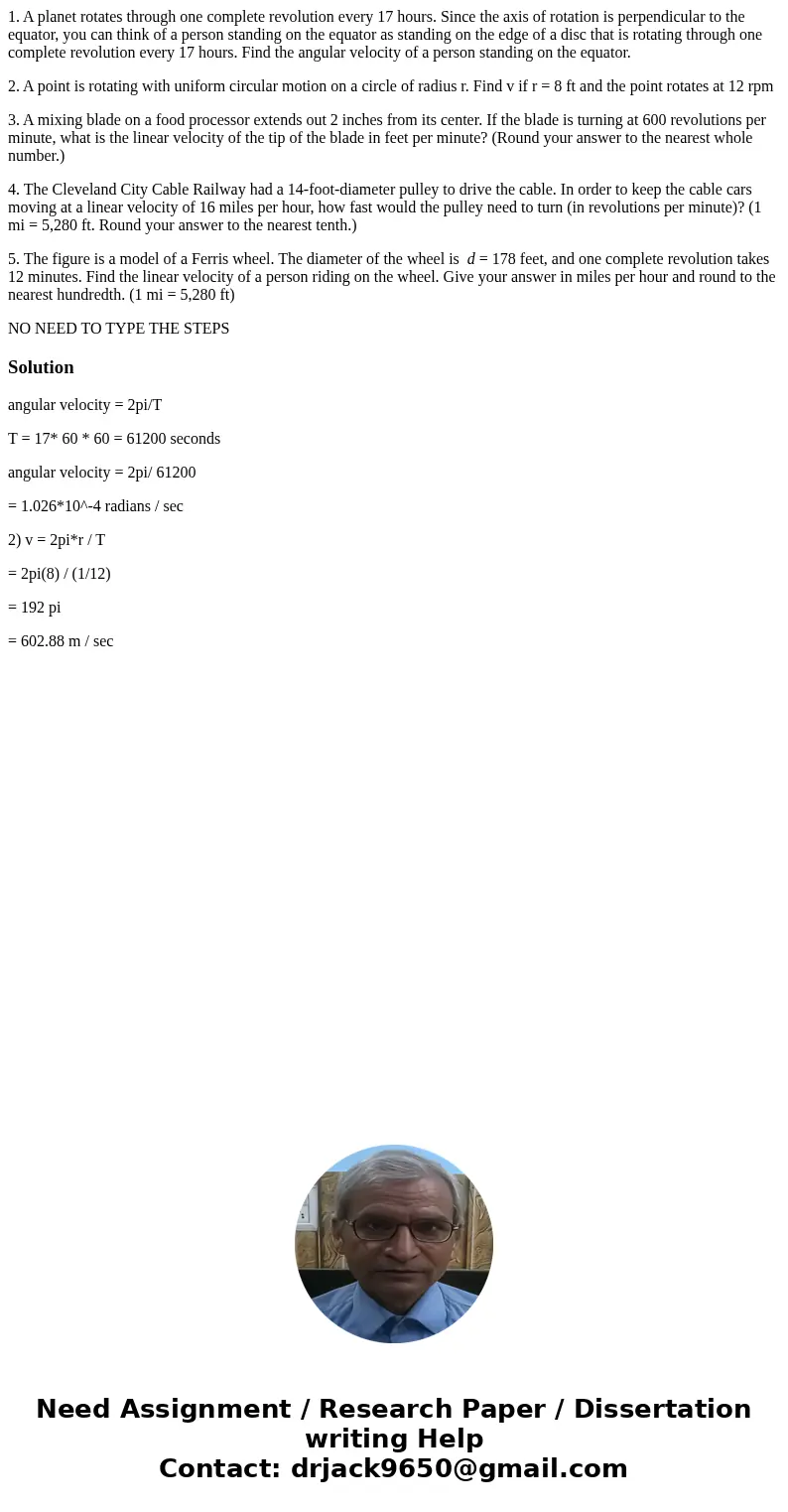1 A planet rotates through one complete revolution every 17
1. A planet rotates through one complete revolution every 17 hours. Since the axis of rotation is perpendicular to the equator, you can think of a person standing on the equator as standing on the edge of a disc that is rotating through one complete revolution every 17 hours. Find the angular velocity of a person standing on the equator.
2. A point is rotating with uniform circular motion on a circle of radius r. Find v if r = 8 ft and the point rotates at 12 rpm
3. A mixing blade on a food processor extends out 2 inches from its center. If the blade is turning at 600 revolutions per minute, what is the linear velocity of the tip of the blade in feet per minute? (Round your answer to the nearest whole number.)
4. The Cleveland City Cable Railway had a 14-foot-diameter pulley to drive the cable. In order to keep the cable cars moving at a linear velocity of 16 miles per hour, how fast would the pulley need to turn (in revolutions per minute)? (1 mi = 5,280 ft. Round your answer to the nearest tenth.)
5. The figure is a model of a Ferris wheel. The diameter of the wheel is d = 178 feet, and one complete revolution takes 12 minutes. Find the linear velocity of a person riding on the wheel. Give your answer in miles per hour and round to the nearest hundredth. (1 mi = 5,280 ft)
NO NEED TO TYPE THE STEPS
Solution
angular velocity = 2pi/T
T = 17* 60 * 60 = 61200 seconds
angular velocity = 2pi/ 61200
= 1.026*10^-4 radians / sec
2) v = 2pi*r / T
= 2pi(8) / (1/12)
= 192 pi
= 602.88 m / sec

 Homework Sourse
Homework Sourse